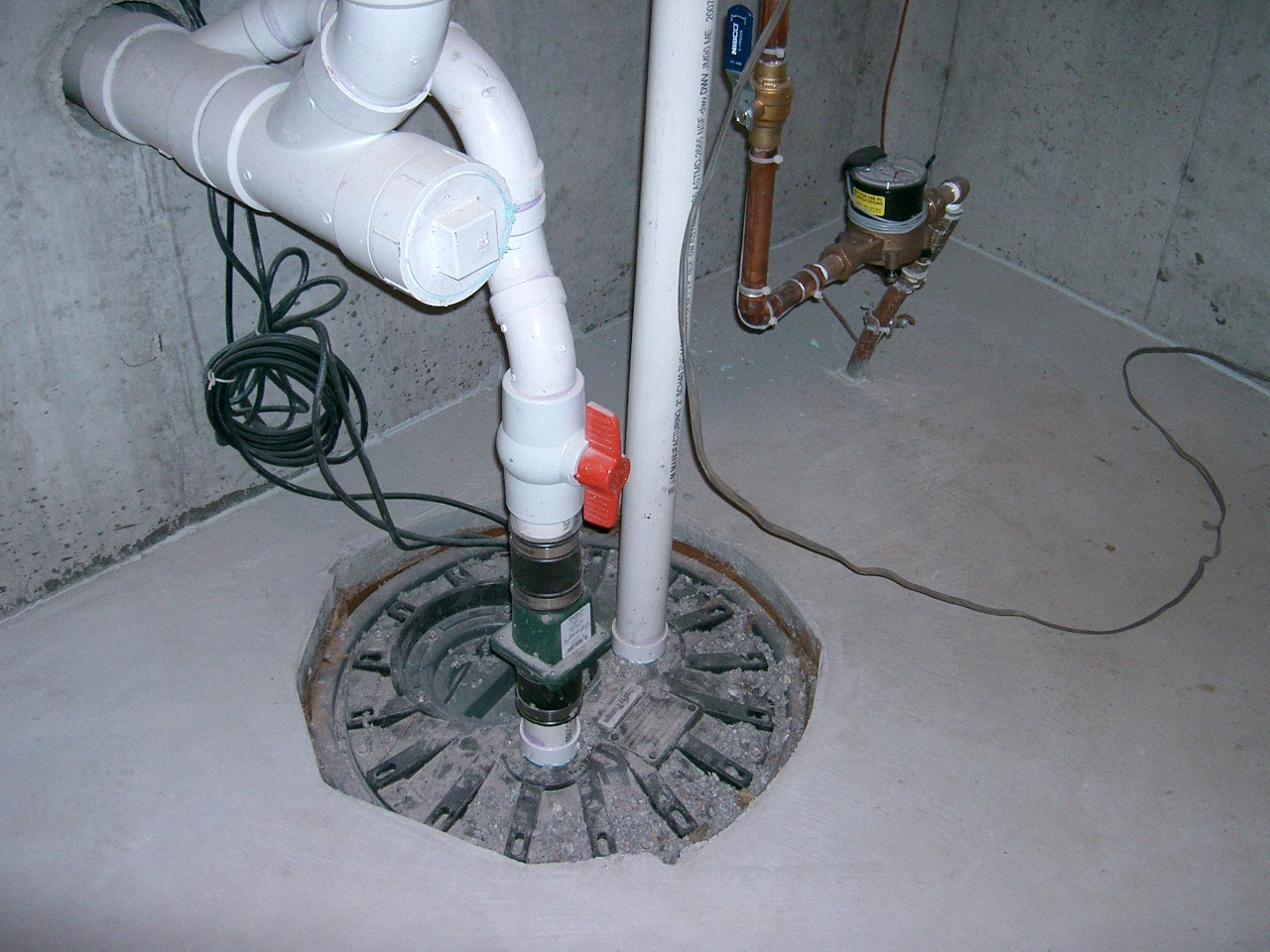Simple Methods for Servicing a Sump Pump
Simple Methods for Servicing a Sump Pump
Blog Article
Everybody maintains his or her own opinion on the subject of How To Effectively Clean A Sump Pump.

Sump pumps are important parts in numerous homes, especially in areas prone to flooding or too much dampness. They aid stop water damages by efficiently getting rid of excess water from cellars or crawl spaces. However, like any other home appliance, sump pumps call for regular upkeep to ensure they work successfully when needed one of the most. Cleansing your sump pump is an important part of its upkeep, and comprehending just how to do it effectively can save you from pricey repair work and prospective catastrophes.
Introduction
Keeping a tidy sump pump is important for its proper functioning and longevity. Overlooking this vital task can cause blockages, malfunctions, and ultimately, water damages to your property. Consequently, discovering exactly how to clean up a sump pump is important for house owners that depend on these tools to keep their cellars dry and secured.
Indications of a Dirty Sump Pump
Knowing when your sump pump needs cleaning is essential for protecting against potential malfunctions. Some usual indications that suggest an unclean sump pump include strange sounds throughout operation, minimized water flow, and visible particles in the pit. If you observe any one of these signs, it's important to cleanse your sump pump quickly to avoid any further issues.
Planning for Cleansing
Prior to you start cleaning your sump pump, it's essential to take some safety preventative measures. Start by shutting down the power to the pump to stay clear of any type of electric accidents. Additionally, use suitable safety gear, such as gloves and goggles, to shield yourself from dirt, particles, and potential microorganisms.
Comprehending the Sump Pump
Before diving into the cleaning process, it's vital to have a fundamental understanding of just how a sump pump functions. Usually installed in a pit or container listed below the basement floor, a sump pump includes several key elements, consisting of a pump, a float switch, and a discharge pipeline. When water builds up in the pit, the float button triggers the pump, which then pumps the water out via the discharge pipe, away from the structure's structure.
Step-by-step Overview to Cleansing a Sump Pump
Shutting down the Power
Begin by detaching the power supply to the sump pump to avoid any crashes while cleansing.
Checking for Appropriate Functioning
Before re-installing the pump, do a quick examination to make sure that the float button turns on the pump correctly. Pour some water right into the sump pit and observe the pump's procedure. If every little thing is functioning correctly, you can rebuild the pump and reconnect the power supply.
Eliminating Debris and Dust
Utilize a container or a scoop to get rid of any kind of noticeable particles, dirt, or debris from the sump pit. Dispose of the debris correctly to avoid it from obstructing the pump or the discharge pipeline.
Cleansing the Pump and Drift Change
Once the pit is free from particles, very carefully remove the pump from the pit. Inspect the pump and the float switch for any indications of damage or wear. Make use of a soft brush or cloth to cleanse the surface areas and eliminate any kind of gathered crud.
Purging the System
After cleaning the pump and float button, purge the sump pit with clean water to eliminate any remaining dirt or debris. This will assist make certain that the pump runs efficiently and efficiently.
Upkeep Tips to Keep Your Sump Pump Clean
In addition to periodic cleansing, there are numerous maintenance pointers you can follow to maintain your sump pump in optimal condition:
Final thought
Cleansing your sump pump is a crucial element of its upkeep and makes sure that it operates effectively when you require it one of the most. By complying with the steps detailed in this overview and including regular upkeep right into your routine, you can prolong the lifespan of your sump pump and safeguard your home from water damage.
6 STEPS ON HOW TO CLEAN A SUMP PUMP PROPERLY
UNDERSTANDING SUMP PUMPS
Your sump pump plays a crucial role in protecting your home by managing and removing excess water. It primarily functions as a “shield”, guarding your basement against the damaging effects of water accumulation. The pump is housed in a sump pit in the lowest part of your basement, and its job is to pump out any water that collects there.
During heavy rainfalls or when snow melts rapidly, water can infiltrate your basement, posing potential risks like flooding, structural damage, and harmful mold growth. Here, the sump pump springs into action, pumping out the intruding water and directing it away from your home.
SAFETY FIRST
Before cleaning, remember to prioritize safety. Disconnect the sump pump from the power source to prevent any accidental electric shocks. Also, wear sturdy gloves to protect your hands from any sharp or dirty components within the pump.
REMOVE THE SUMP PUMP
After ensuring your safety, the next step is to remove the sump pump from its pit. Doing this might require careful maneuvering as you don’t want to damage any pump components. Once removed, clean the sump pit to remove any accumulated debris or sludge.
INSPECT THE PUMP
Inspect the pump for any visible signs of wear or damage. Check the power cord, float switch, and impeller housing. If any components look worn out or damaged, consider replacing them to ensure optimal performance.
CLEAN THE PUMP
Thoroughly clean the pump with warm, soapy water. Make sure to rid it of any dirt, gravel, or other debris that might impede its performance. You can use a toothbrush to clean the small, hard-to-reach parts of the pump.
REINSTALL THE SUMP PUMP
Reinstall the pump into the sump pit Make sure it’s positioned correctly to remove the water effectively Once it’s back in place, reconnect it to the power source TEST THE PUMP
Finally, pour some water into the pit to ensure the pump works correctly. It should start automatically and begin pumping out the water; if it doesn’t, check the power source and the positioning of the pump.
Remember, while cleaning your sump pump is an essential part of home maintenance, hiring a professional plumber for a thorough inspection and cleaning at least once a year is also important. This will ensure that your pump is in optimal condition, ready to protect your home from potential water damage.
BEST PRACTICES FOR CLEANING SUMP PUMP DISCHARGE PIPES
Regular Inspection: Regularly inspect your discharge pipes, especially during heavy rainfall or snowmelt periods. Look for any signs of blockage or damage. Early detection of problems can prevent serious issues down the line. Periodic Cleaning: Over time, sediment and debris can accumulate in the discharge pipes, impeding the flow of water. Regular cleaning helps keep the pipes clear and functioning efficiently. You can use a high-pressure water jet to effectively clean the pipes. Insulation During Winter: In colder climates, discharge pipes can freeze, blocking the outflow of water. Protect your discharge pipes from freezing temperatures by insulating them with foam pipe insulation. This will ensure the sump pump can continue to discharge water even in freezing conditions. Proper Positioning: The discharge pipe should be positioned to direct water away from your home’s foundation. Improper positioning can lead to water seeping back into the basement. Ensure the pipe is long enough and angled correctly. Installation of a Check Valve: A check valve prevents water from flowing back into your sump pit after the pump has pushed it out. Installing a check valve helps maintain the efficiency of your sump pump and reduces the risk of flooding. Minimize Pipe Turns: Every curve or turn in the discharge pipe can decrease the efficiency of water flow. By minimizing turns and bends in your discharge pipe, you can increase the efficiency of your sump pump. https://www.fullspeedplumbing.com/how-to-clean-a-sump-pump-properly9999/

Do you appreciate more info about Keep Your Sump Pump Clean, It'll Keep You Dry? Post a remark directly below. We will be pleased to see your suggestions about this blog posting. We hope that you come back again in the future. Enjoyed reading our entry? Please quickly share it. Help another person check it out. We recognize the value of your readership.
Estimate Report this page